The Raincross Gazette is on Holiday Break
The Gazette's 2-person newsroom is on a publishing break through holidays. Regular publishing will resume on Monday, January 5, 2026.
From the arrival of the first passenger train in 1885 to the repurposing of its historic depots, the Santa Fe Railroad, once the lifeline of Riverside's citrus golden age, left a legacy in its wake.
Riverside only had a direct connection to rail service for several years after its founding in 1870 but had to travel to Colton, a journey of about ten miles that included crossing the Santa Ana River for service on the Southern Pacific Railroad. Finally, in August of 1882, Riverside obtained a closer connection on the eastern edge of the town slightly north of Point of Rock at the base of Sugarloaf Mountain (today, east of the intersection of Rustin and Marlborough near the Santa Fe tracks). The California Southern Railway, a subsidiary of the Santa Fe, was built north from San Diego, heading toward San Bernardino, and created a stop for Riverside. It was closer than Colton, but this stop was still a couple of miles from downtown.
In 1885, the Santa Fe chartered the Riverside, Santa Ana, and Los Angeles Railway company to connect their line through Riverside to cities in Orange County and on to Los Angeles. The line extended from Citrus (later East Riverside and today Highgrove) down into Riverside, where the city had deeded eight blocks near Olive Street, except for the land held by the Upper Canal of the Riverside Water Company. The Highgrove depot, originally built in 1888 north of Center Street, was moved ten years later south of Center and next to the freight station. Both buildings were sold to Santa Fe employees in 1953, and the rumor is that at least three houses were built from the dismantled lumber. This demonstrated an excellent early recycling of material on their part.
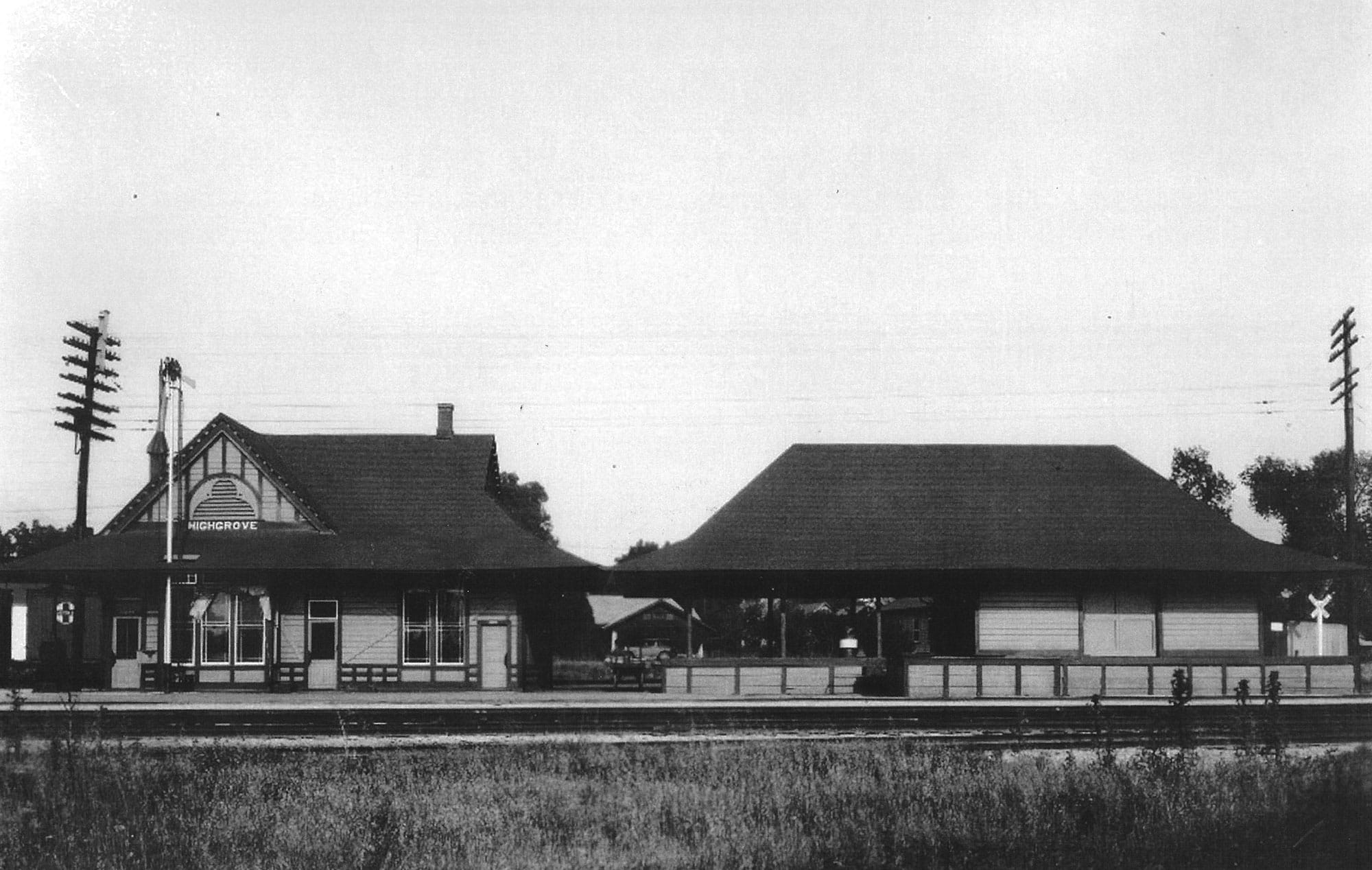
A freight car near Eighth Street served as the first depot in downtown Riverside; a photo in the Museum of Riverside collection shows this boxcar near the Edwin T. Earl Shipper building. In early December of 1885, the Riverside Press and Horticulturist boasted:
The sound of the locomotive whistle on the Riverside, Santa Ana & Los Angeles Railroad sounds nearer each day as the track laying progresses, and in a few days regular trains will receive and land passengers at our Eight street depot from all parts of the world. “Great is Riverside, and the railroad is its profit.”
The first passenger train arrived in Riverside at 4 pm on Saturday, December 12, 1885, carrying the railroad president and other officials. On January 1, 1886, Edwin T. Earl shipped the first carload of oranges from that Eighth Street depot. Earl had settled in Los Angeles and, for years, had one of the largest fruit packing and shipping concerns in Southern California. He also invented early ventilator-refrigerator fruit cars and owned the Continental Fruit Express.
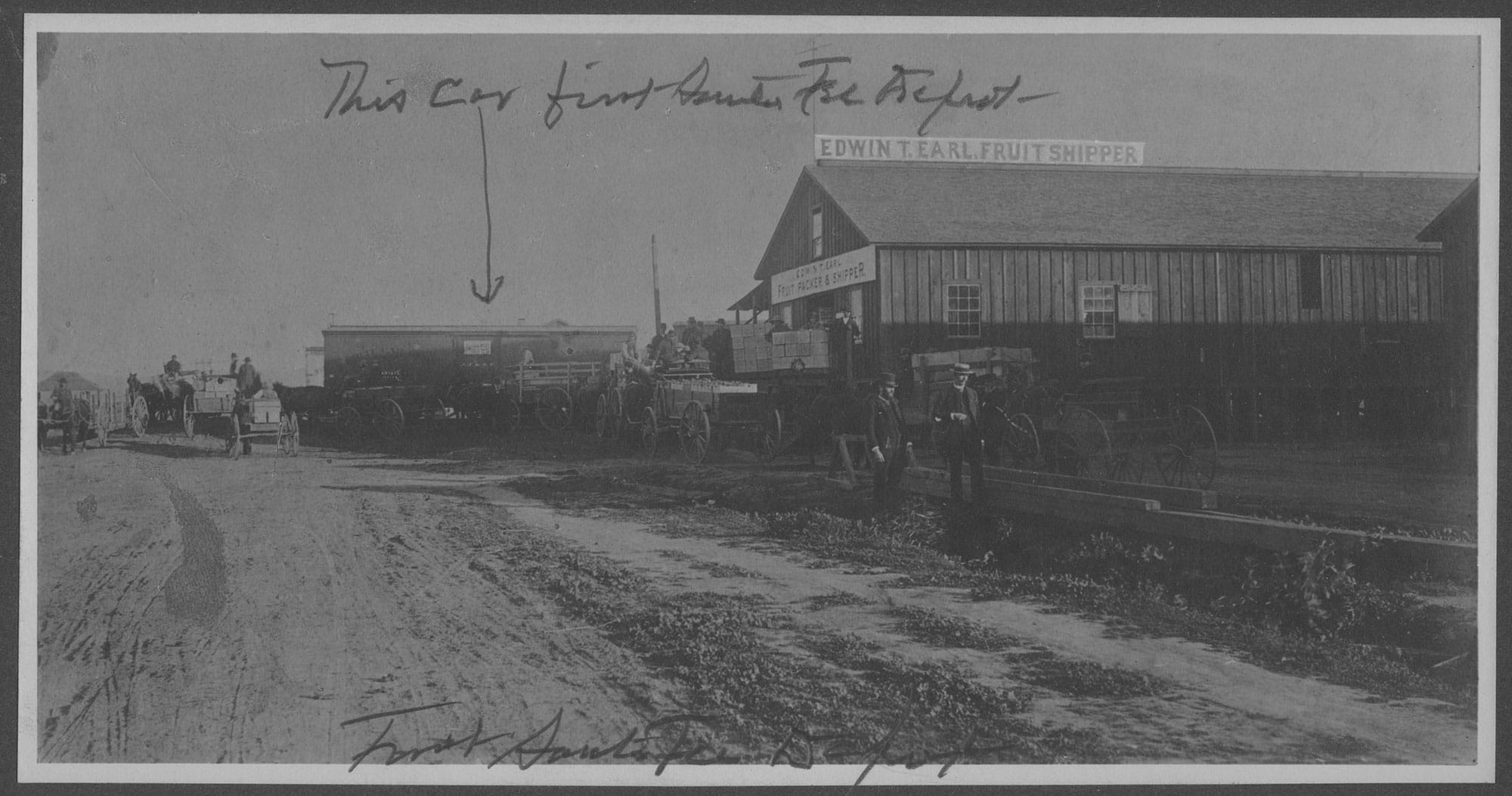
A more permanent structure soon replaced the temporary boxcar depot. Construction started in April 1886 and was finished by August of that year. Imagine today completing such a building in only about four months. Riverside now had an impressive station for passengers to arrive at and depart from Riverside.
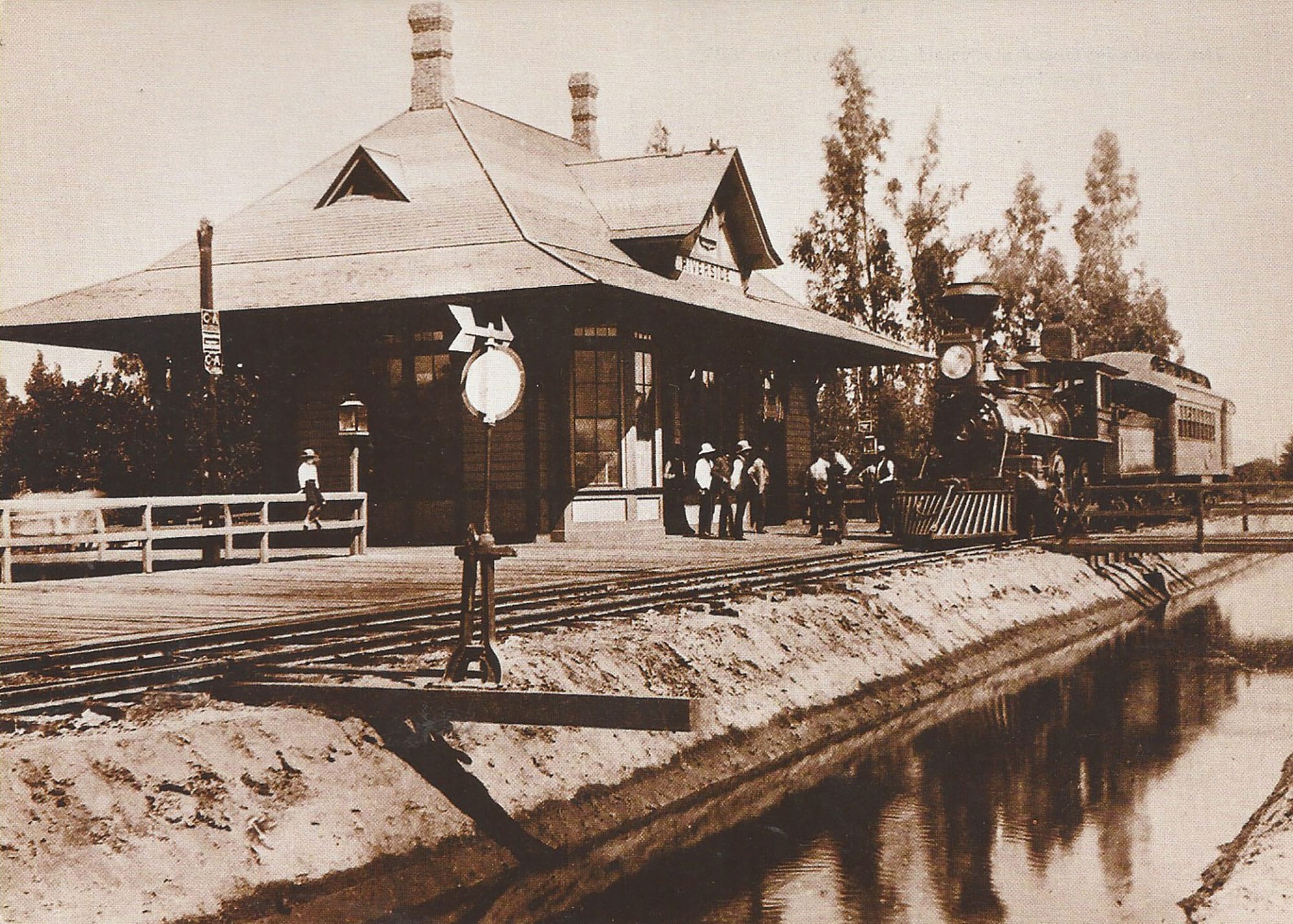
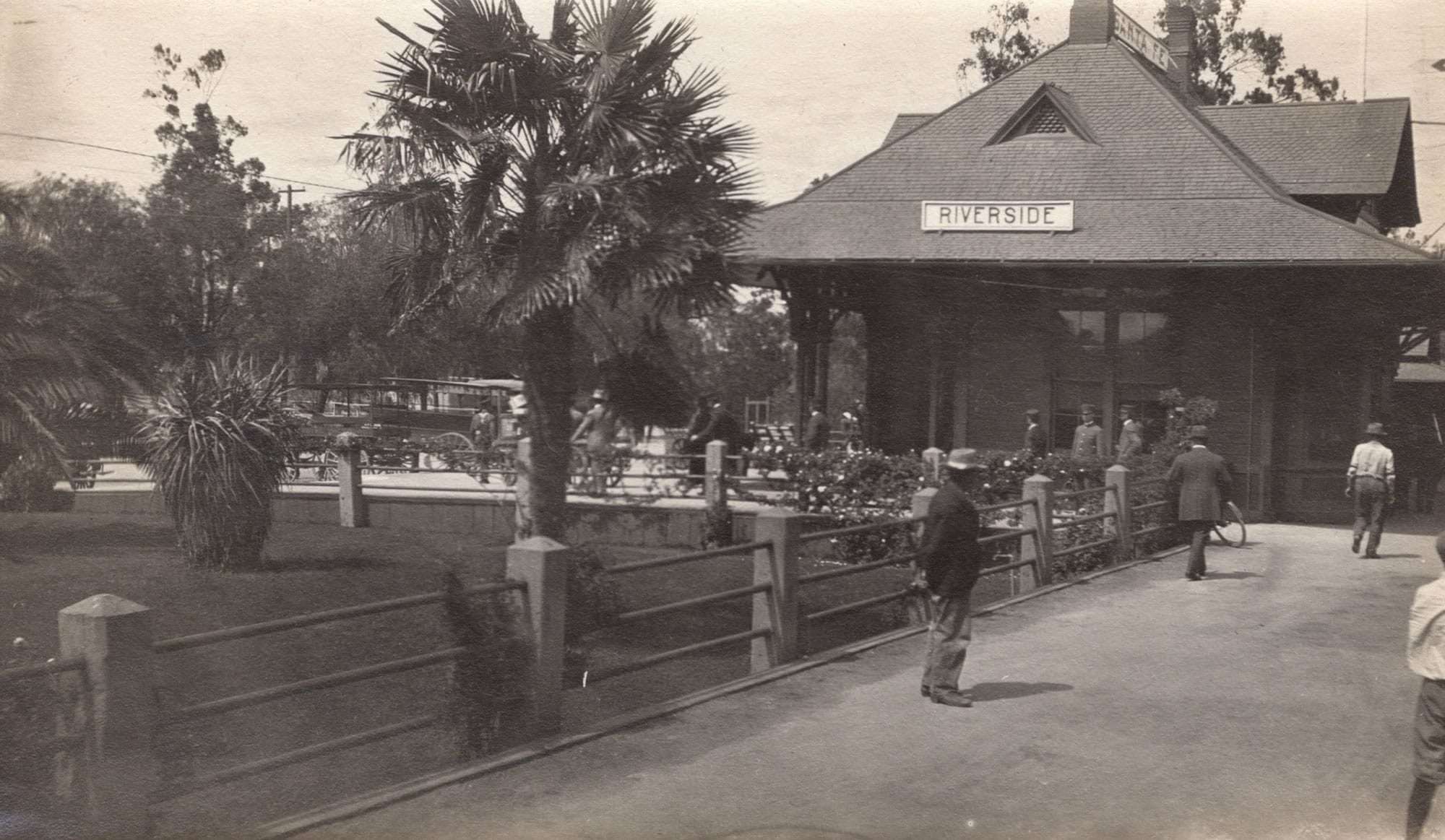
The Santa Fe Depot in Riverside, built along the Upper Canal, and Riverside Depot photographed in about 1890 (Author’s Collection).
On January 27, 1927, the Santa Fe Railroad dedicated a new depot, described as the “Hopi-Pueblo” style with a tile roof. On the day of the dedication, the new station was described as “a building whose design and artistic finish evidence the painstaking efforts of the designers to provide Riverside with a structure in keeping with its architectural ideals.” The building still exists but is now offices and was designated as City Landmark No. 100.
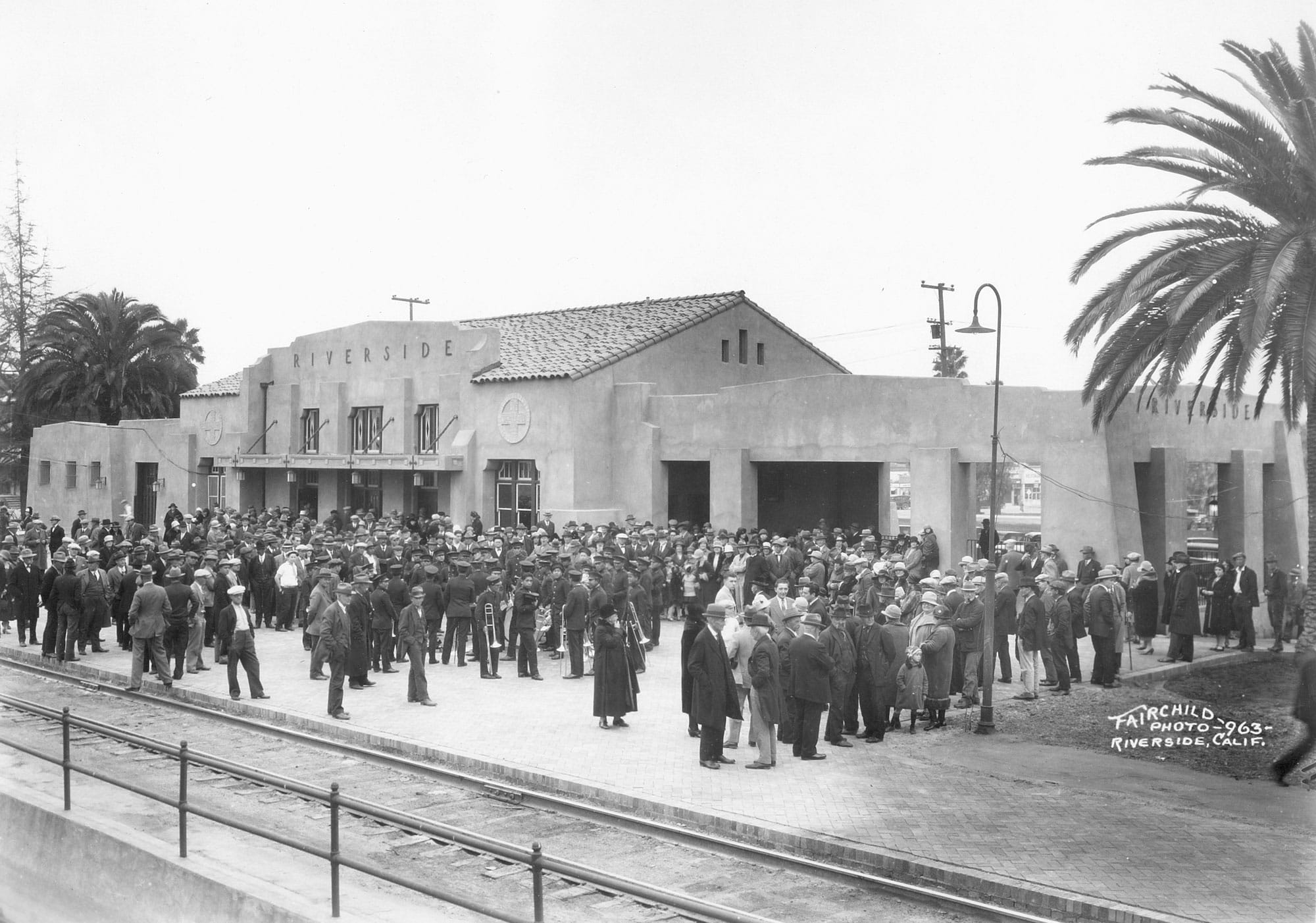
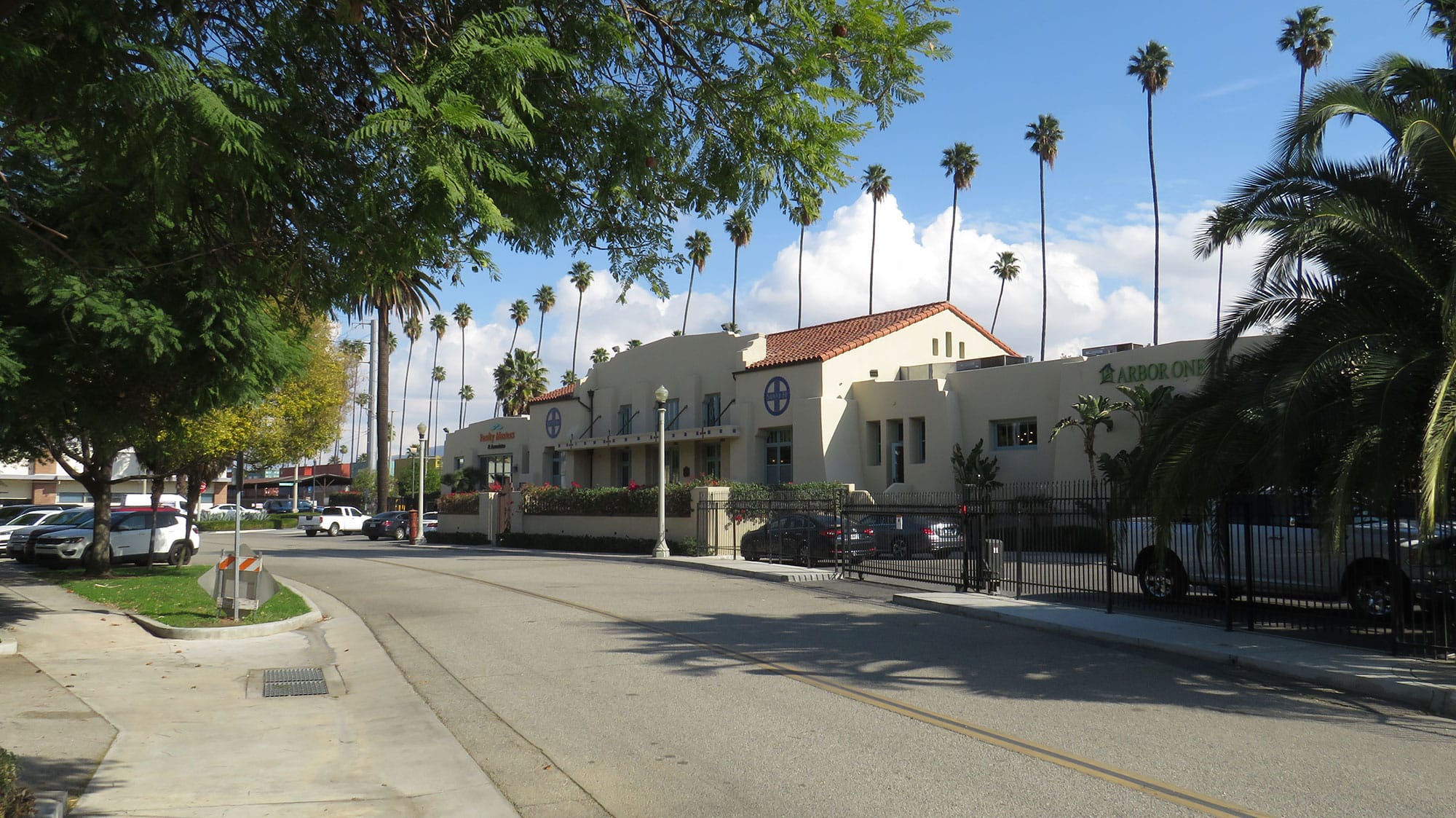
The Dedication of the Santa Fe Depot on January 26, 1927 (Courtesy of the Museum of Riverside) and later photographed by the author in January 2021.
Santa Fe did not conclude its service to Riverside with the downtown depot. The railroad added stops and even depots along the line to serve the various communities springing up in what would later be part of the city of Riverside. They were built for passenger service and some industries along the line, especially the citrus industry. From 1901 until 1920, a frame passenger shelter at Prospect Street was only about three-quarters of a mile down the track. In 1897, a frame passenger depot was built at Pachappa, located just north of Arlington Avenue along the Santa Fe tracks. It was at this depot that President Teddy Roosevelt disembarked on his 1903 visit to Riverside. From here, he visited some of the local orange groves before spending the night at the Mission Inn. From 1930 through 1934, the Pachappa station was reduced to just seasonal use during the shipping time for oranges. The depot was razed in August of 1938.
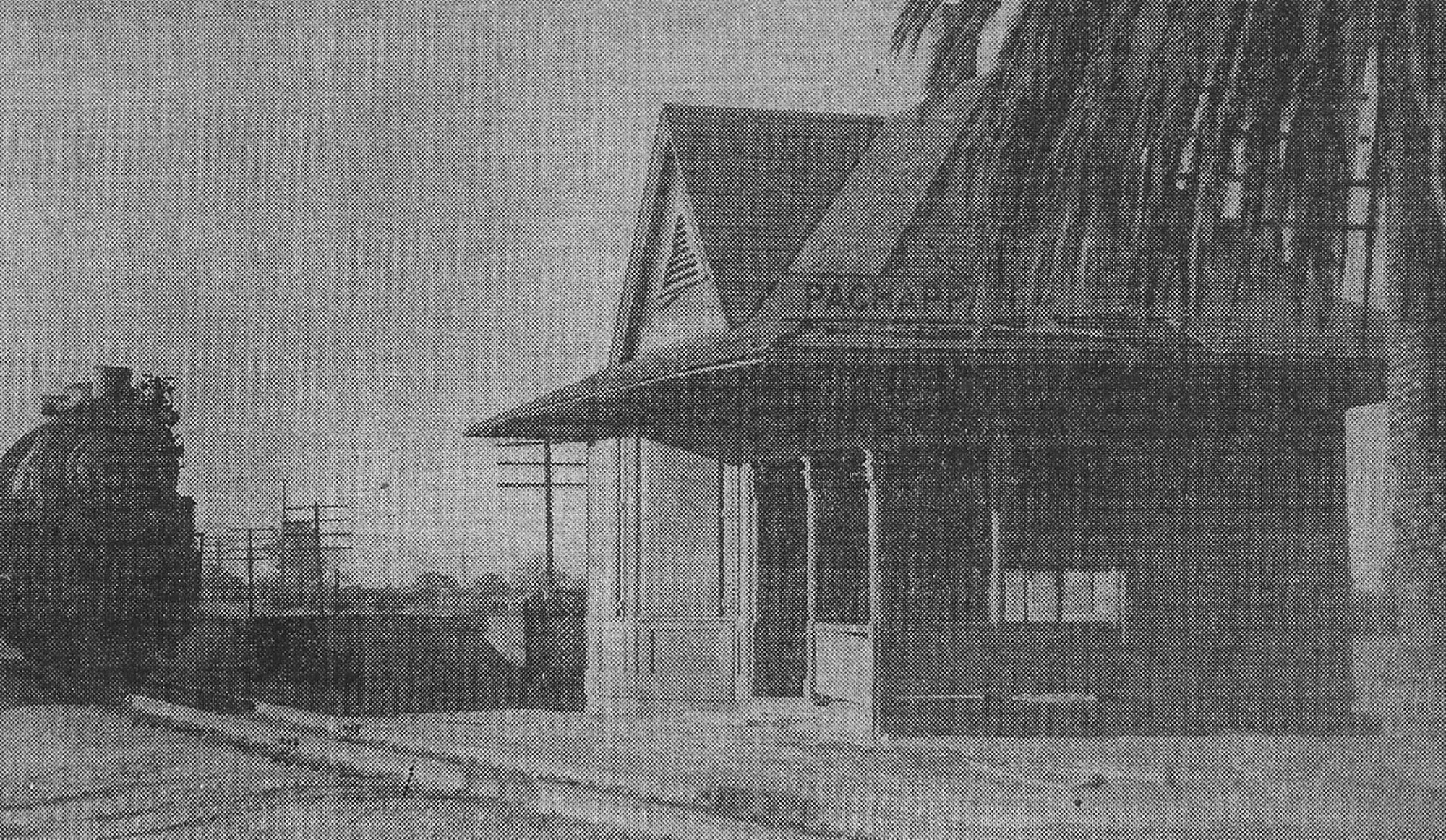
Casa Blanca received a small depot in 1890. In 1897, the early one was removed, and a larger one was erected. This depot remained in service until 1967 when it was demolished. The location is now an empty lot on Railroad Avenue between Madison Street and Grace Street. In 1896, a spur was located near Casa Blanca and extended to a stone quarry at Prenda near Dufferin and north of Madison Street. Even after the quarry work was finished, this line served the citrus industry until the packing house along the spur burned in 1977.
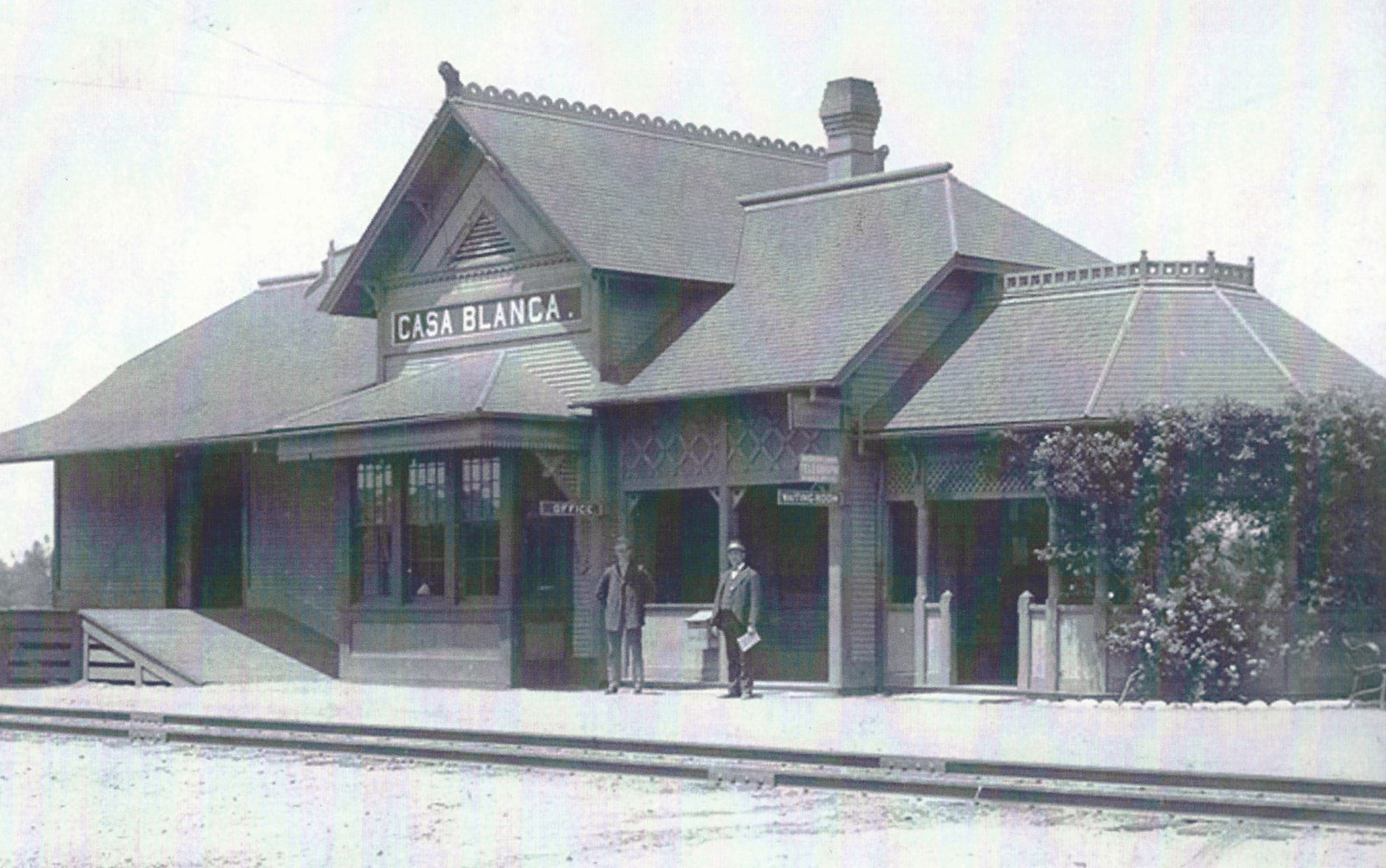
The last depot constructed along the line in Riverside was at Arlington, near the southwest corner of Indiana and Van Buren. Originally, in 1886, a railcar body was placed at this location to serve the area. The car was replaced by a frame depot in 1892. That depot was replaced in 1897 by a larger frame depot from Elsinore Junction (built in 1887). The Arlington depot burned on July 13, 1963, and was replaced by a freight structure that moved here from South Pasadena. The Arlington agency was closed in 1971, and the depot was torn down.
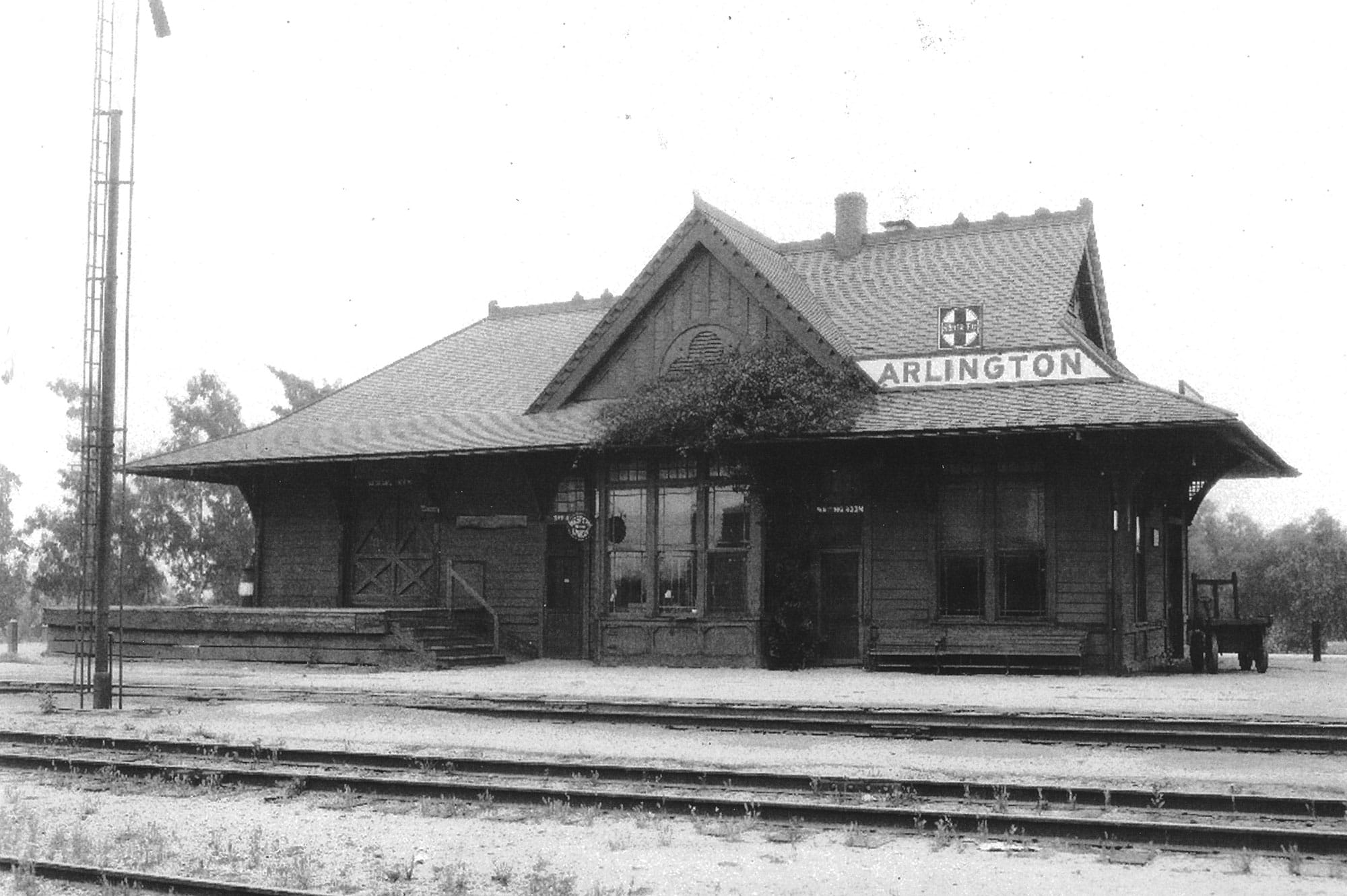
A final stopping point in what is now Riverside was the car body depot at Alvord, where the tracks crossed Magnolia Avenue in the southern part of the city. Here, from 1915 until 1922, a railcar served passengers, and another railcar served freight traffic from 1915 until 1941.
There was much more to the Santa Fe Railroad service to Riverside than just at the main downtown station. With the growing communities and the various industries, especially the orange packing houses, there was plenty of activity in Riverside for rail service. Today, the Burlington Northern and Sante Fe Railroad main line still carries numerous freight trains through Riverside as they carry the freight from the ports of Long Beach and Los Angeles to the rest of the nation. Santa Fe passenger service ended in 1971 with the creation of Amtrak, which took over nationwide passenger travel service. The only visible reminder of the bustling activity of earlier years for Santa Fe is the downtown depot, long converted from passenger service to office space for various firms.
Let us email you Riverside's news and events every morning. For free!